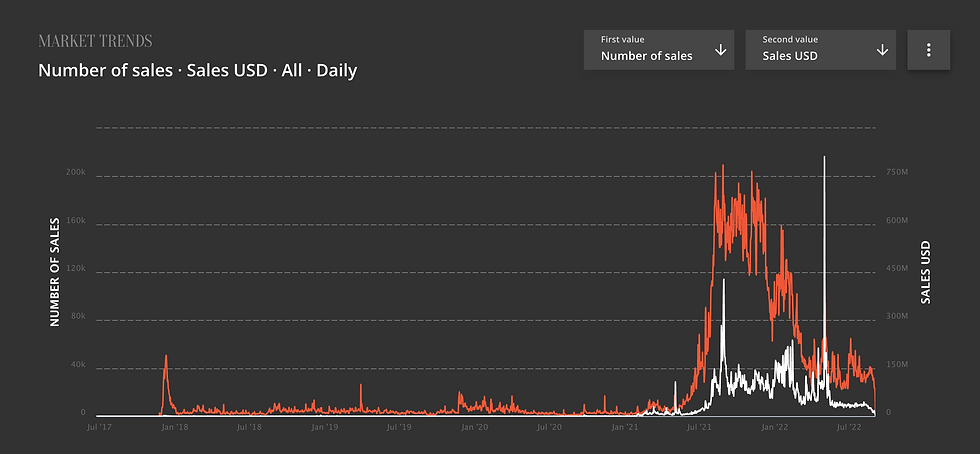Reading 1 Response
- thdo3657
- Sep 1, 2022
- 2 min read
I love how the article begins with two questions ("What is digital art? What is it worth?) that are still largely unanswered today. The medium of digital art is ever-changing, becoming more cutting-edge, detailed, and accessible every year. 2014 was a very different time than now, and although the GIF had been around for over 25 years, it took Michael Green's "Balloon Dog Deflated" to take the format's potential to the next level. This reopened the discussion on the value of digital art. Putting a price on a piece of digital artwork and selling it as a one-of-a-kind piece sent ripples through the art world and began the process of true NFT development.
Although the market for non-fungible tokens is nowhere near the tremendous peak it reached during the Spring of 2021, one could still argue that Michael Green is a pioneer of the format. Possibly even more important, one could also argue that Michael Green was the catalyst for digital artists being able to list and sell their works for considerable sums of money in a market that hardly existed a decade ago. Thanks to the recent boom in transactions of digital artwork, many artists can now make a living (and sometimes more than a living) by selling their work on the internet.
At the end of the day, digital art, just like traditional art, is worth whatever people will pay for it. Artworks and the values assigned to them have always been the topic of scrutiny and as we continue to dive deeper in the digital age, don't expect anything to change.
The first gif, circa 1987
The first gif ingrained in my memory, circa 2011

Human One, a $29 million dollar gif displayed in a 7-foot case

Some new works from Jeff Koons (inflated)

The quiet before the storm, the storm, and after

Comments